Cenotes of the Yucatán Peninsula in Mexico
Cenotes are natural pits or sinkholes resulting from the collapse of limestone bedrock that exposes groundwater underneath. They are especially associated with the Yucatán Peninsula of Mexico, which is primarily made up of porous limestone. For millions of years, rainfall slowly ate away at the limestone and a huge system of underground caves and caverns was formed. Many filled with water from rain or from the underground water table. When the roof of a water filled cave collapses, a cenote is born. There are an estimated 7,000 cenotes in the Yucatán Peninsula.
Cenote comes from the Mayan word “dzonot” or “ts’onot” which means sacred well, and had great significance for the Maya. First, they represented the main water supply in a land that has no surface water bodies and suffers long dry seasons. As a consequence, all Mayan villages were built in the vicinity of a cenote, in order to secure a permanent water supply. Second, cenotes were also important for religious reasons. They believed cenotes to be portals to the underworld and a way to communicate with the gods. Archaeological research has found evidence of religious ceremonies that took place in or around cenotes, including human sacrifices.
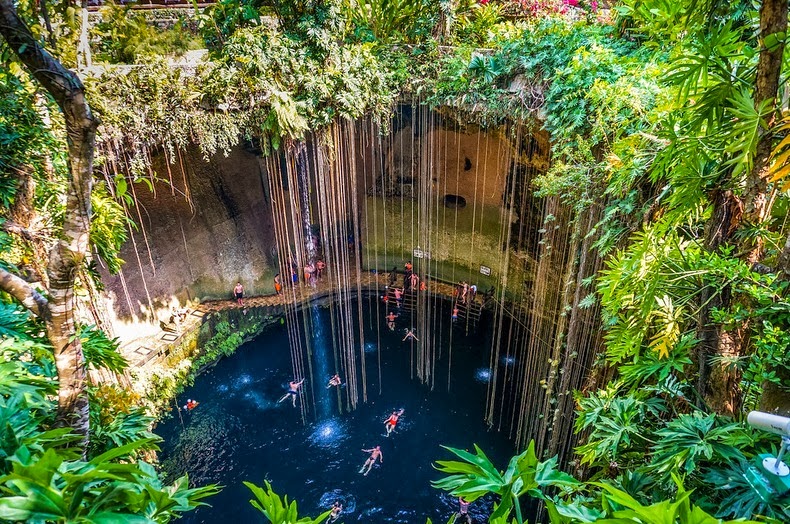
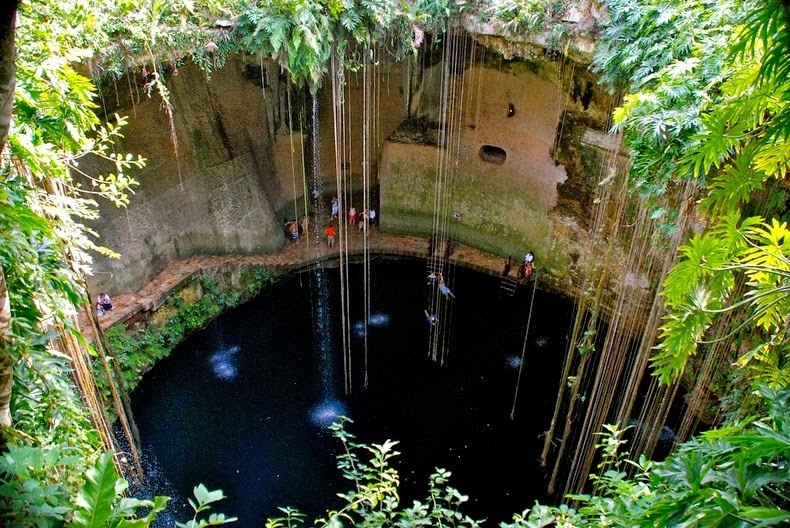
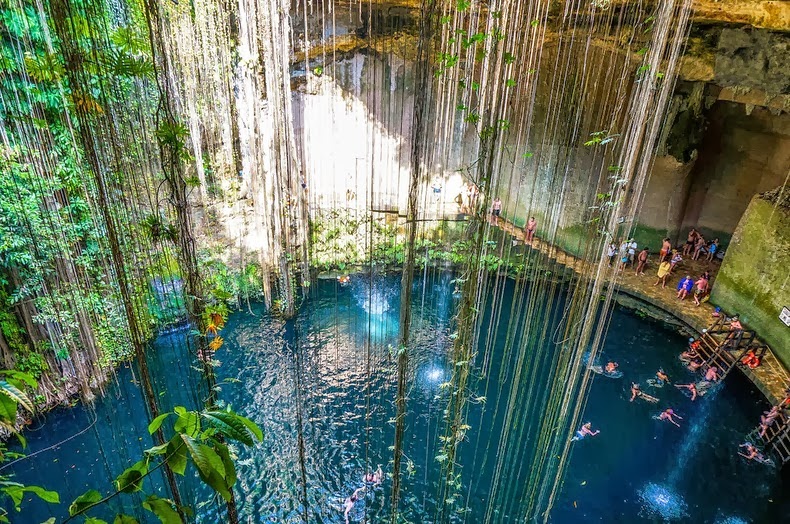


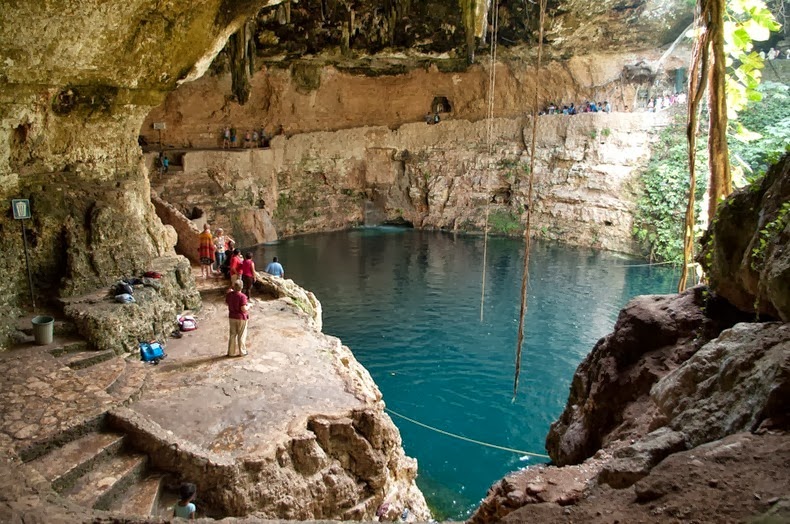
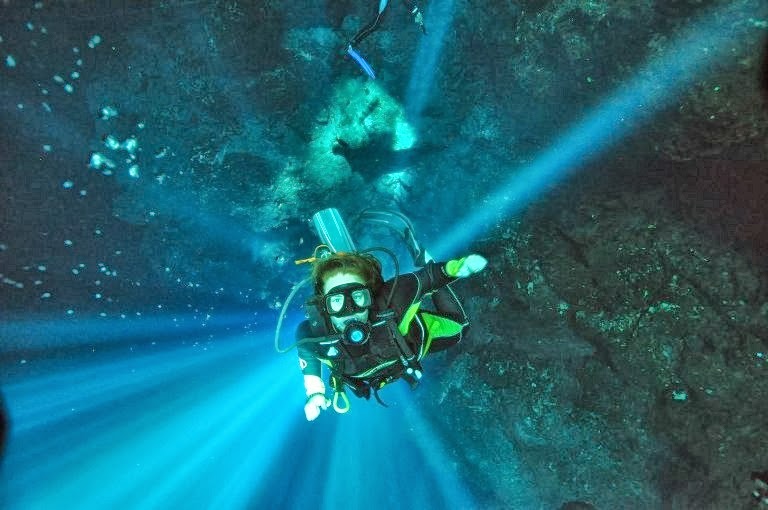
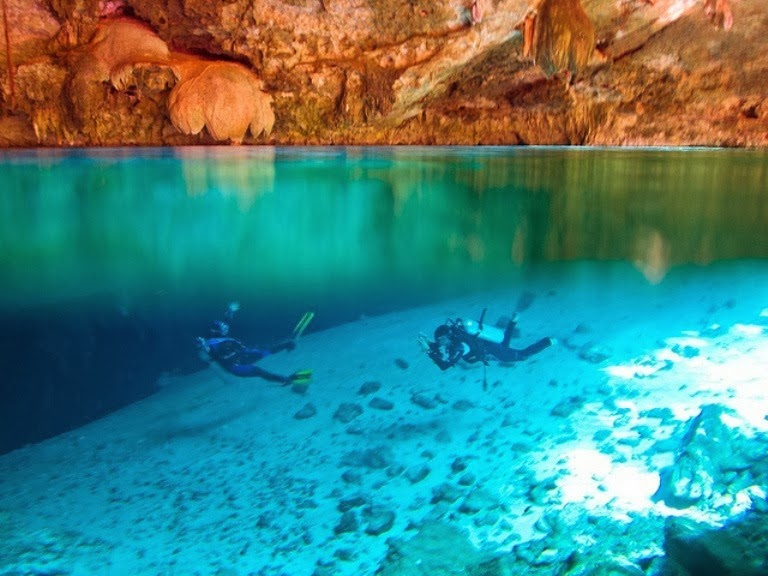

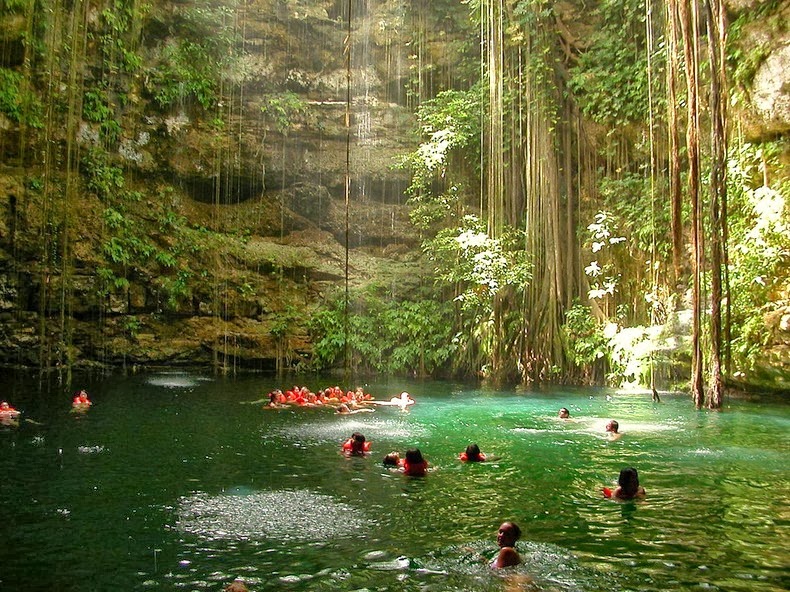
amusingplanet

